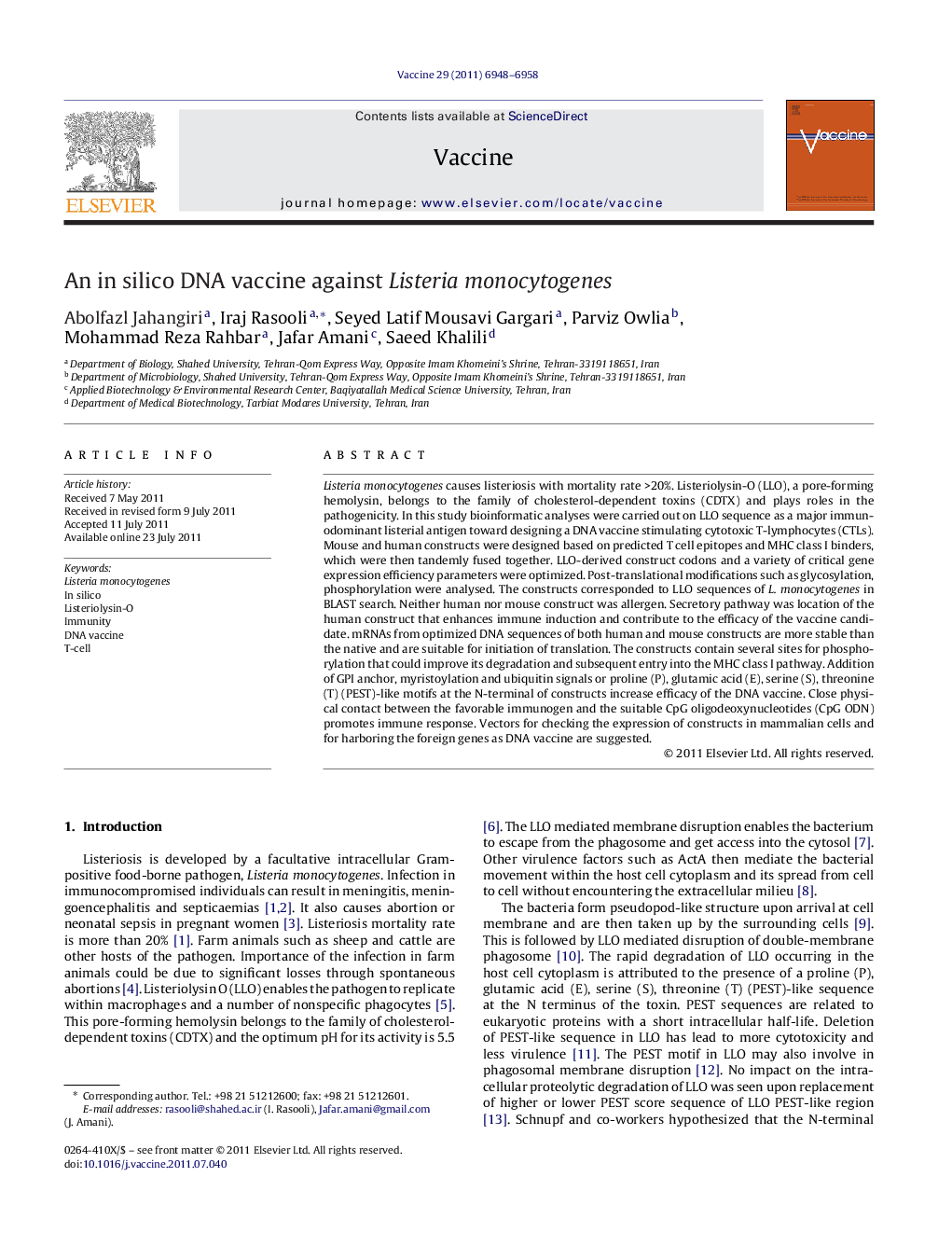| Article ID | Journal | Published Year | Pages | File Type |
|---|---|---|---|---|
| 2403103 | Vaccine | 2011 | 11 Pages |
Listeria monocytogenes causes listeriosis with mortality rate >20%. Listeriolysin-O (LLO), a pore-forming hemolysin, belongs to the family of cholesterol-dependent toxins (CDTX) and plays roles in the pathogenicity. In this study bioinformatic analyses were carried out on LLO sequence as a major immunodominant listerial antigen toward designing a DNA vaccine stimulating cytotoxic T-lymphocytes (CTLs). Mouse and human constructs were designed based on predicted T cell epitopes and MHC class I binders, which were then tandemly fused together. LLO-derived construct codons and a variety of critical gene expression efficiency parameters were optimized. Post-translational modifications such as glycosylation, phosphorylation were analysed. The constructs corresponded to LLO sequences of L. monocytogenes in BLAST search. Neither human nor mouse construct was allergen. Secretory pathway was location of the human construct that enhances immune induction and contribute to the efficacy of the vaccine candidate. mRNAs from optimized DNA sequences of both human and mouse constructs are more stable than the native and are suitable for initiation of translation. The constructs contain several sites for phosphorylation that could improve its degradation and subsequent entry into the MHC class I pathway. Addition of GPI anchor, myristoylation and ubiquitin signals or proline (P), glutamic acid (E), serine (S), threonine (T) (PEST)-like motifs at the N-terminal of constructs increase efficacy of the DNA vaccine. Close physical contact between the favorable immunogen and the suitable CpG oligodeoxynucleotides (CpG ODN) promotes immune response. Vectors for checking the expression of constructs in mammalian cells and for harboring the foreign genes as DNA vaccine are suggested.
► Bioinformatic analyses were carried out on Listeriolysin-O sequence to design a DNA vaccine against Listeria monocytogenes. ► Two constructs were designed based on predicted T cell epitopes and MHC-I binders. ► Post-translational modifications were analysed. ► The construct codons and gene expression efficiency parameters were optimized. ► mRNAs from optimized DNA sequences are more stable than the native.
